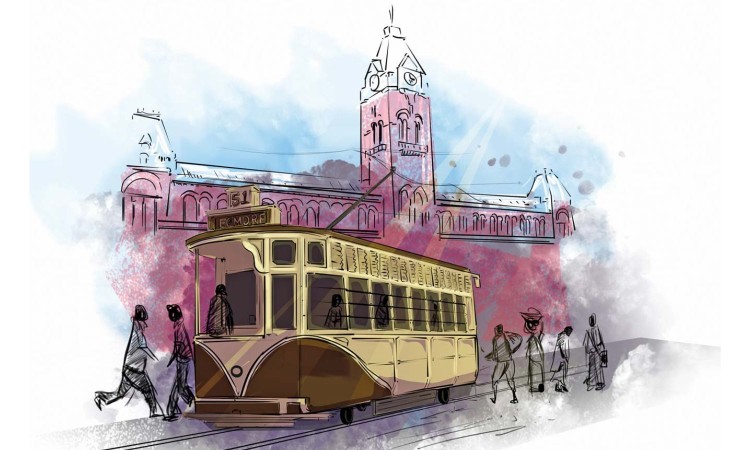Blast from the past: Cumta moots trams’ return in Chennai
The Comprehensive Mobility Plan for the Chennai Metropolitan Area, prepared by the Chennai Unified Metropolitan Transport Authority (Cumta) for 2023 to 2048, has revived the idea of trams as part of a long-term strategy to reduce congestion and cut emissions.

Illustration : Jancy Rani
CHENNAI: Tramways, the transport system that exists only in Chennai’s collective nostalgia, may soon return to the city’s streets, as transport planners have proposed a modern at-grade system to ferry people in its busiest commercial districts.
The Comprehensive Mobility Plan for the Chennai Metropolitan Area, prepared by the Chennai Unified Metropolitan Transport Authority (Cumta) for 2023 to 2048, has revived the idea of trams as part of a long-term strategy to reduce congestion and cut emissions.
It has mooted at-grade trams in dense neighbourhoods that already host multiple mass transit corridors to strengthen the first and last-mile connectivity by linking Metro stations, suburban rail nodes, bus stops, and major commercial hubs.
A potential 15.4-km corridor has been identified to connect T Nagar, Nungambakkam, Nandanam, and the Light House. The alignment will be finalised after a detailed feasibility study. The proposal, with an estimated project cost of Rs 1,155 crore, is part of Cumta’s long-range vision up to 2048.
The city once had an extensive tram network that ran for six decades. Operated by the Madras Electric Tramway Company, the service began in 1895 and eventually grew to 97 cars running on 24 km of track. At its peak, the system carried one lakh passengers a day.
The main route linked Parry’s Corner and Luz junction via the Central station area, while an east-west line connected Central and Roxy in Purasaiwalkam. The service was shut on April 12, 1953, bringing an end to a slow but reliable mode that had defined daily mobility in the old Madras Presidency.
If revived, Chennai’s trams would return in a radically different form, not as a relic of the past but as a low-carbon mobility option for a congested metropolis seeking cleaner air and smoother inter-modal travel.
It can eventually support the creation of low-emission zones in Chennai, where the movement of private and high-polluting vehicles could be restricted, said officials.



